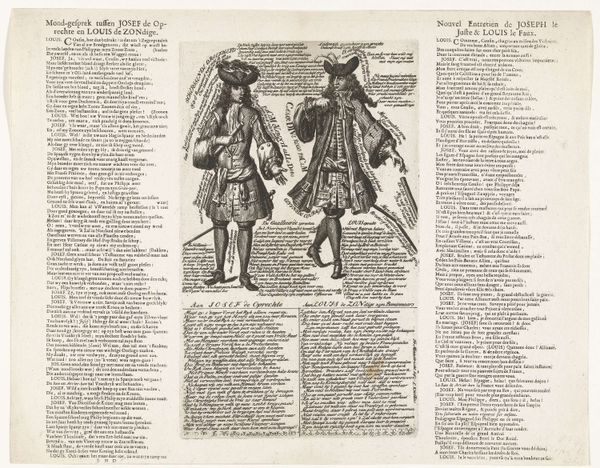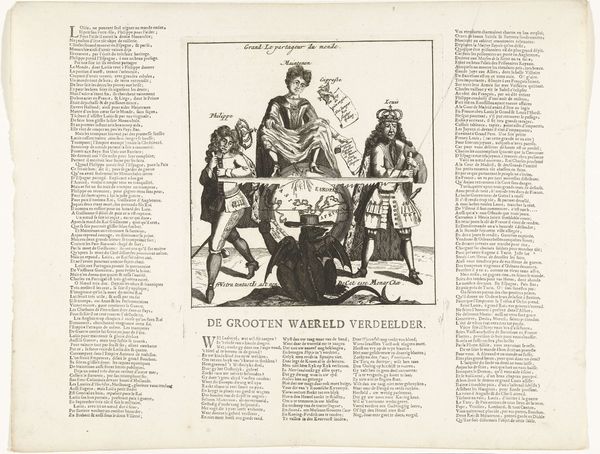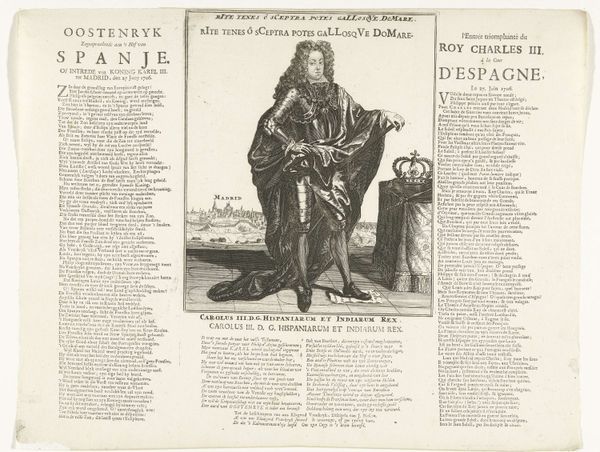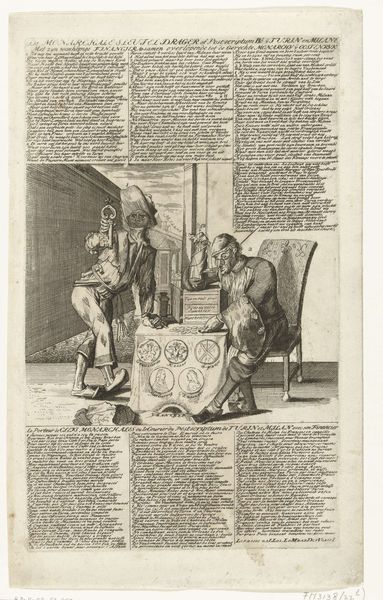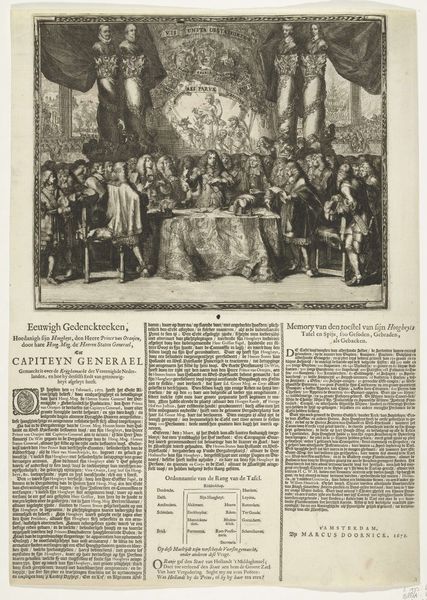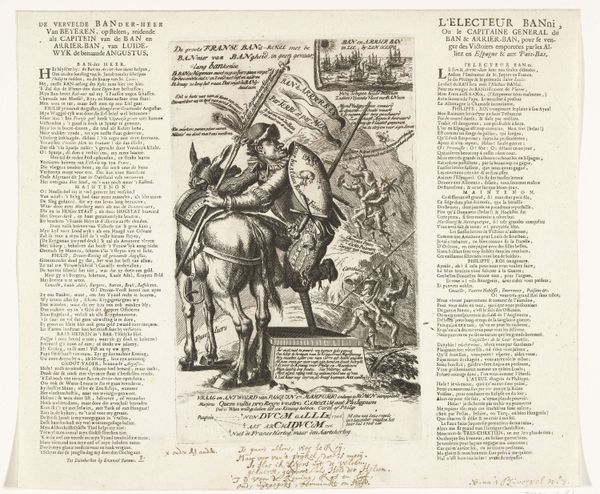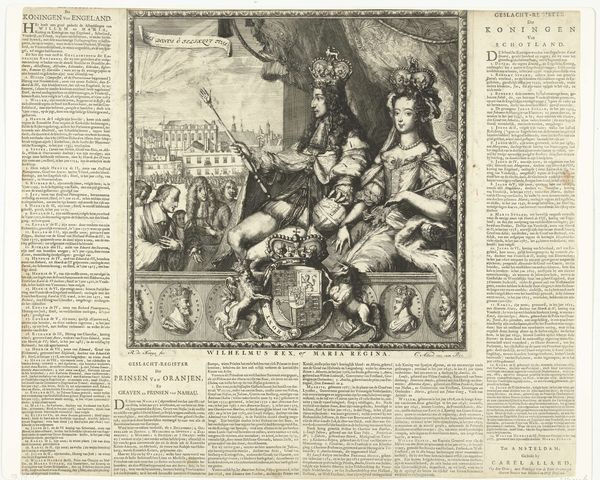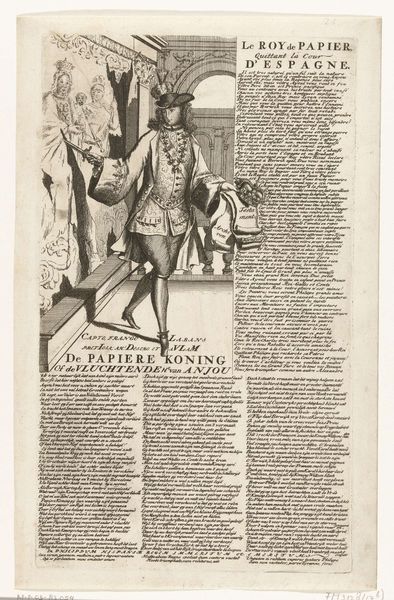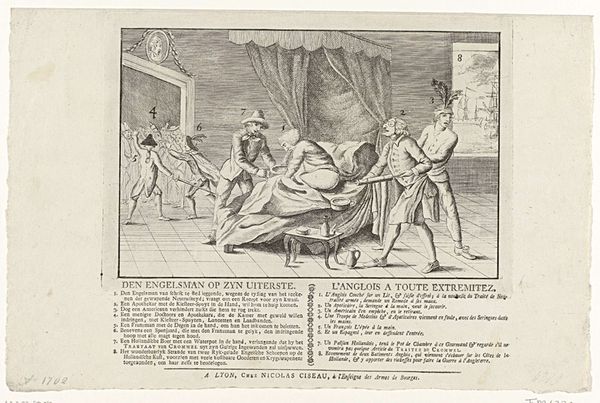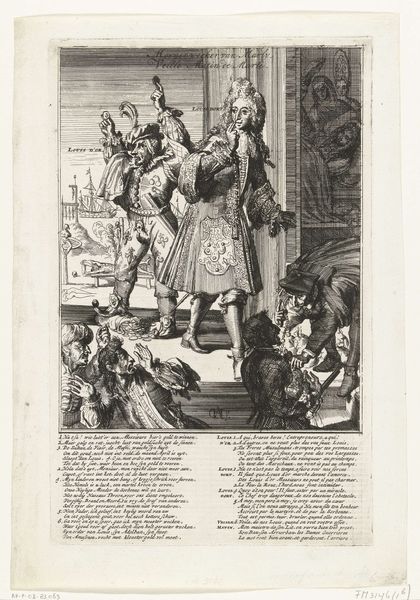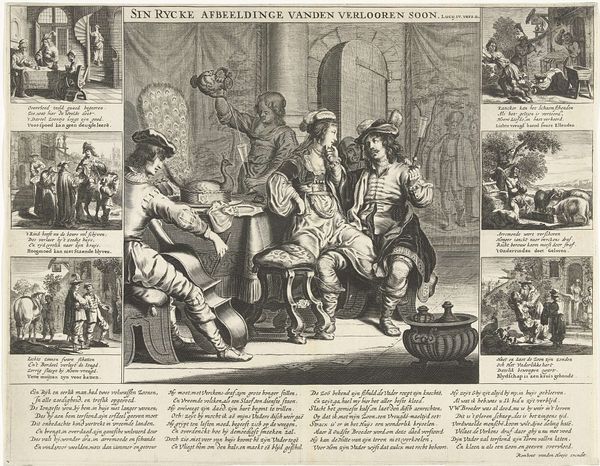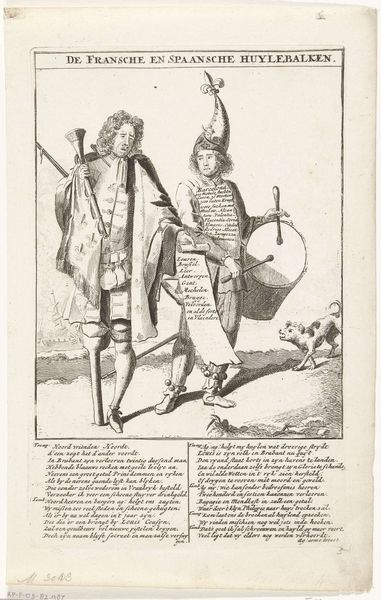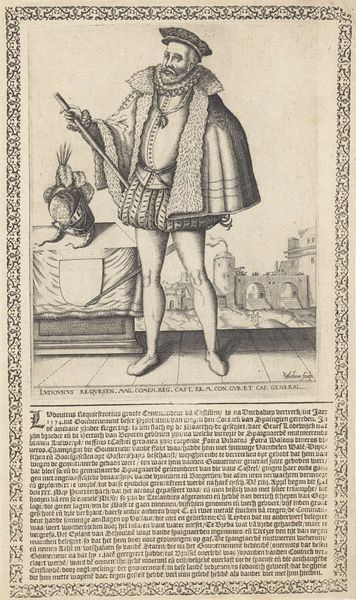
print, paper, engraving
#
portrait
#
baroque
# print
#
paper
#
history-painting
#
engraving
Dimensions: height 315 mm, width 402 mm
Copyright: Rijks Museum: Open Domain
Curator: So, here we have a print from 1706, “Filips V vlucht uit het Spaanse Hof, 1706” (Philip V flees the Spanish Court, 1706), currently housed in the Rijksmuseum. What's your first impression? Editor: It feels…satirical? Like a political cartoon. The figure is Philip V, and he's dramatically exiting a building. But it’s also like… a performance, a rather mocking one? What do you see in this piece? Curator: Absolutely! This isn't just a portrait; it's a visual commentary on power and its instability. Note the title "The Paper King." The text surrounding the image acts almost like propaganda. Consider the historical context. Philip V’s claim to the Spanish throne was contested, leading to the War of the Spanish Succession. This print speaks directly to that moment of crisis, questioning his legitimacy. Do you see how the artist uses the theatrical staging and costume to undermine Philip's authority? Editor: I do now. The crown in his hand looks almost like a prop. It's as if his royal regalia is falling apart. The artist also highlighted how words have different effects in different languages: on one side is in Dutch, the other in French, plus Latin in the lower part. What was the meaning of the different languages at that time? Curator: Precisely! Language here becomes another weapon. The trilingual text points to the complex web of political alliances and rivalries during the period, reflecting how information was spread, but also how it was carefully tailored for specific audiences. Consider who would have purchased and circulated this print. Whose perspective does it represent, and what political agendas are at play? Editor: I hadn’t considered that. I see it’s more than just a portrait of a fleeing king. It is very savvy, playing with imagery, language and theater to create a potent critique of power. I'll definitely look at political prints differently now. Curator: Wonderful! It's about understanding art as deeply intertwined with social and political dynamics. Art never exists in a vacuum, so we need to understand the power dynamics at play in its making.
Comments
No comments
Be the first to comment and join the conversation on the ultimate creative platform.
